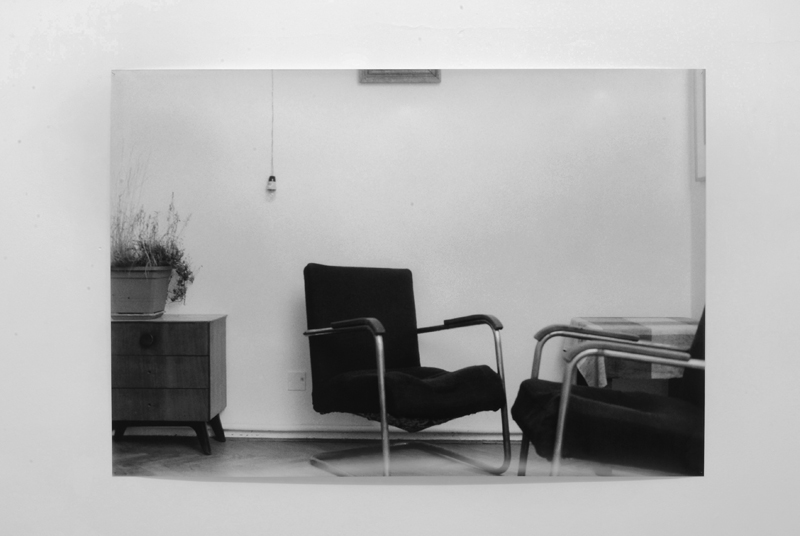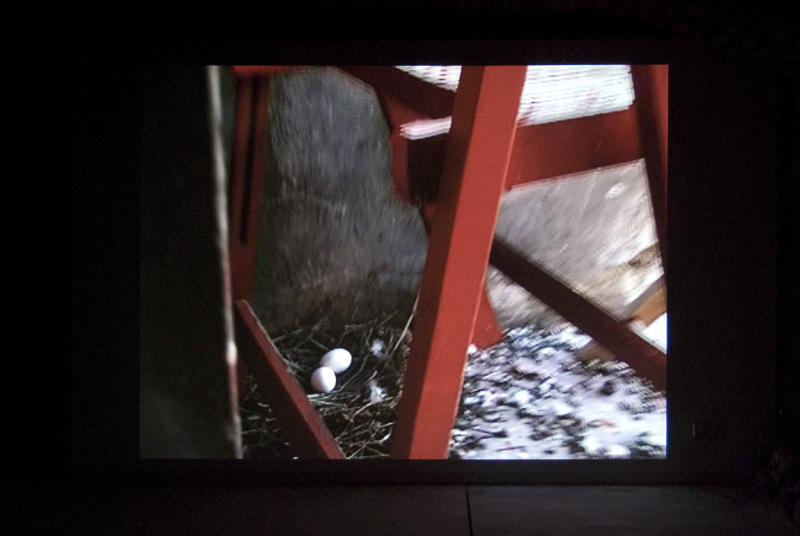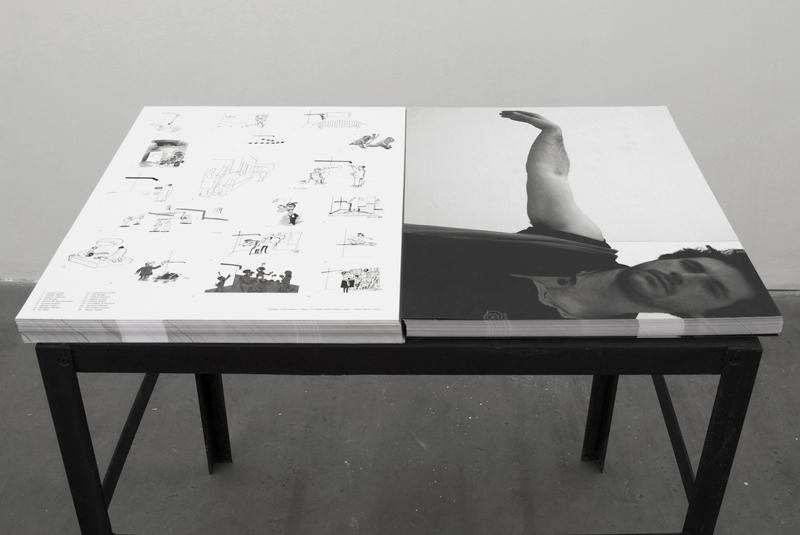Gaspard of the Night at the Center for Contemporary Art Futura, Prague (Exhib. Review)
Gaspard of the Night, The Center for Contemporary Art Futura, Prague. March 2, 2010-May 9, 2010.
What characterizes art in the 21st century? What is the role of meaning in art and what function does fantasy play in the current post-conceptual approach towards art? According to Václav Magid, curator of the Gaspard of the Night exhibition currently showing at the Center for Contemporary Art Futura in Prague, the past two decades have emphasized rationality, resulting in an overly descriptive tendency in contemporary art. To resist this phenomenon, Magid applies two seemingly contradicting concepts/principles: the gothic and the grotesque. The grotesque and the gothic, intertwined in Romanticism, enable the viewer to reject rationality and perceive post-conceptual works through the prism of aesthetic categories. The viewer is therefore presented with an irrational world in which gothic and grotesque principles might be accessible, yet for a deeper understanding of individual works and of the concept of the exhibition as a whole they (should) remain marginal.
 The Gaspard of the Night, inspired by the book of French Romantic writer and poet Aloysius Bertrand (1807-1841), constructs an irrational space in which reality and fantasy intertwine. Fitting examples of this complex interconnection are the two photographs by Markéta Othová. In Untitled (2009) Othová explores the relationship between presence and absence, remembrance and reality. The old, seemingly abandoned and empty armchair in her photograph still bears the sign of the last person sitting in it, and thus evokes a ghost-like image. Who was the last person who sat there, how long has it been since (s)he left, and is (s)he really gone?
The Gaspard of the Night, inspired by the book of French Romantic writer and poet Aloysius Bertrand (1807-1841), constructs an irrational space in which reality and fantasy intertwine. Fitting examples of this complex interconnection are the two photographs by Markéta Othová. In Untitled (2009) Othová explores the relationship between presence and absence, remembrance and reality. The old, seemingly abandoned and empty armchair in her photograph still bears the sign of the last person sitting in it, and thus evokes a ghost-like image. Who was the last person who sat there, how long has it been since (s)he left, and is (s)he really gone?
The second photograph, Art Institute (2006), takes the concept of materializing history a step further; it depicts a “living” dinosaur flying in circles around the classicist ceiling in the Art Institute in Chicago. A similar connection between reality and fiction is played out in the textual work by Daniela Bará?ková (2010). Drawing inspiration from her vivid dreams, she constructs dreamlike scenarios and presents figures from the local art scene (including herself) in bizarre yet humorous situations. Emulating the world of dreams, her texts often come to an ambiguous and abrupt end, thus offering the spectator only fragments of her fantasy world. Complemented by hyper-realistic drawings made by the curator, the work generates a unique tension between the uncanny nature of Barackova’s text and the authenticity of the images, suggesting that fantasy and reality are never far apart and that the slightest shift may change the way we perceive a particular situation or image.
 The fact that even the most delicate movement can change the appearance of objects comes to mind when encountering Filmogram 2,3,4,5,6,7 (2009-2010) by Michal P?chou?ek, a series of six film celluloid strips each presenting an image of the same chair. Although the image of the chair remains the same, the viewer can perceive the motion of the frame boarder across the picture in each of the celluloid strips, so that the six celluloids provide countless ways in which the same image may appear to the viewer.
The fact that even the most delicate movement can change the appearance of objects comes to mind when encountering Filmogram 2,3,4,5,6,7 (2009-2010) by Michal P?chou?ek, a series of six film celluloid strips each presenting an image of the same chair. Although the image of the chair remains the same, the viewer can perceive the motion of the frame boarder across the picture in each of the celluloid strips, so that the six celluloids provide countless ways in which the same image may appear to the viewer.
What is the original image? Could it be found on the missing “Filmogram # 1”? This feeling of uncertainty is continued in L (2010), a sculptural work by Marek Meduna, in which the artist presents a monkey that is identifiable only through its realistically painted shadow. It is this Platonic idea that brings us back to the question of the visible and invisible, the real and fictional, each equally important.
 Although the elements of the grotesque and the gothic should be understood as a tool for rejecting rationality–and therefore should not be perceived as a dual concept in individual works–humor and elements of a dark sinister world (as the gothic principle is understood in Romanticism) seem to be the key aspect of many exhibited works. A fitting example is the video by Sláva Sobotovi?ová entitled Dove (2008). The artist takes on the evil role of a thief who steals eggs from a dove’s nest on his balcony. Despite all its poetic features, the work ends as an Old Testament tragedy: the dove returns back to the nest only to discover that the eggs are no longer there.
Although the elements of the grotesque and the gothic should be understood as a tool for rejecting rationality–and therefore should not be perceived as a dual concept in individual works–humor and elements of a dark sinister world (as the gothic principle is understood in Romanticism) seem to be the key aspect of many exhibited works. A fitting example is the video by Sláva Sobotovi?ová entitled Dove (2008). The artist takes on the evil role of a thief who steals eggs from a dove’s nest on his balcony. Despite all its poetic features, the work ends as an Old Testament tragedy: the dove returns back to the nest only to discover that the eggs are no longer there.
While Sobotovi?ová makes an (overly) clear reference to the sinister gothic principle, Roman Š?etina on the other hand emphasizes the element of the grotesque. His sound installation, Nocturne (2009-2010), is based on a radio program intervention. The artist calls in to an interactive program and, instead of discussing the issues at hand, he responds with recorded fragments from old, well-known movies. Although his interventions result in laughable situations, the overly humorous quality of the work also causes the spectator to regard the piece as a funny joke. Compared to Sobotovi?ová or Š?etina, other works–such as the video by Ivan Svoboda (I have met the same child twice, 2010)–appear utterly incomprehensible by either their form or their content. Reality and fantasy here are inseparable, but in this case it is at the expense of coherence.
The goal of the exhibition seems to be a rejection of the didactic, the descriptive, and the obviously superficial, which–according to the curator–have otherwise constituted the problematic and reductive approach mirrored on different levels in post-conceptual art. If his goal was indeed to create a complex platform that would assemble works with the common denominator formed by irrationality, the combination of the rational and fictional, and a manifestation of a return to a different (slightly more abstract) approach to conceptual art, Magid has only partially reached his goal (namely due to also including works that appear more comprehensible than others).
Although the two elements, i.e., the gothic and the grotesque (tools used to return to a less “descriptive/didactic” aesthetics), keep reappearing throughout the show, they do not (and do not intend to) construct a backbone of the exhibition. The very incomprehensibility and irrationality do, however, and it is this that Magid finds interesting. It is thus left to the spectator to find his way to individual works and articulate his own subjective interpretation of them, as well as their possible mutual interconnection that goes beyond the unintelligible and/or the irrational.
But what is the message for the spectator? One of the closing sentences of the curatorial text questions the nature of art in the twenty first century and is followed by further questioning as to general human interest in art. Should this lead us to understand the Gaspard of the Night exhibition as a manifestation of what art should look like in the new era? Should incomprehensibility really be the goal of the contemporary artist, and, if so, should the curator follow suit? Moreover, should we consider this to be the new artistic and curatorial aesthetic? And if this is the case, who should be the audience? Are we on the verge of rejecting the leftwing discourse on art and establishing a new elite?
 It is a paradox that an exhibition whose curatorial goal is audience incomprehension includes the work by Pavel Sterec, To Shake With a Lifeless Hand (2010), which consists of a series of caricatures that address the current lack of interest in conceptual and post-conceptual art. The reluctance of the spectator to so far comprehend and further engage with notions of contemporary art has been fittingly manifested here, but it also undermines and works against the concept of the show. For the sake of newly emerging art, let us just hope that Sterec’s pessimistic take on the situation is not entirely right and that future curatorial practice won’t primarily aim to feed into it.
It is a paradox that an exhibition whose curatorial goal is audience incomprehension includes the work by Pavel Sterec, To Shake With a Lifeless Hand (2010), which consists of a series of caricatures that address the current lack of interest in conceptual and post-conceptual art. The reluctance of the spectator to so far comprehend and further engage with notions of contemporary art has been fittingly manifested here, but it also undermines and works against the concept of the show. For the sake of newly emerging art, let us just hope that Sterec’s pessimistic take on the situation is not entirely right and that future curatorial practice won’t primarily aim to feed into it.



